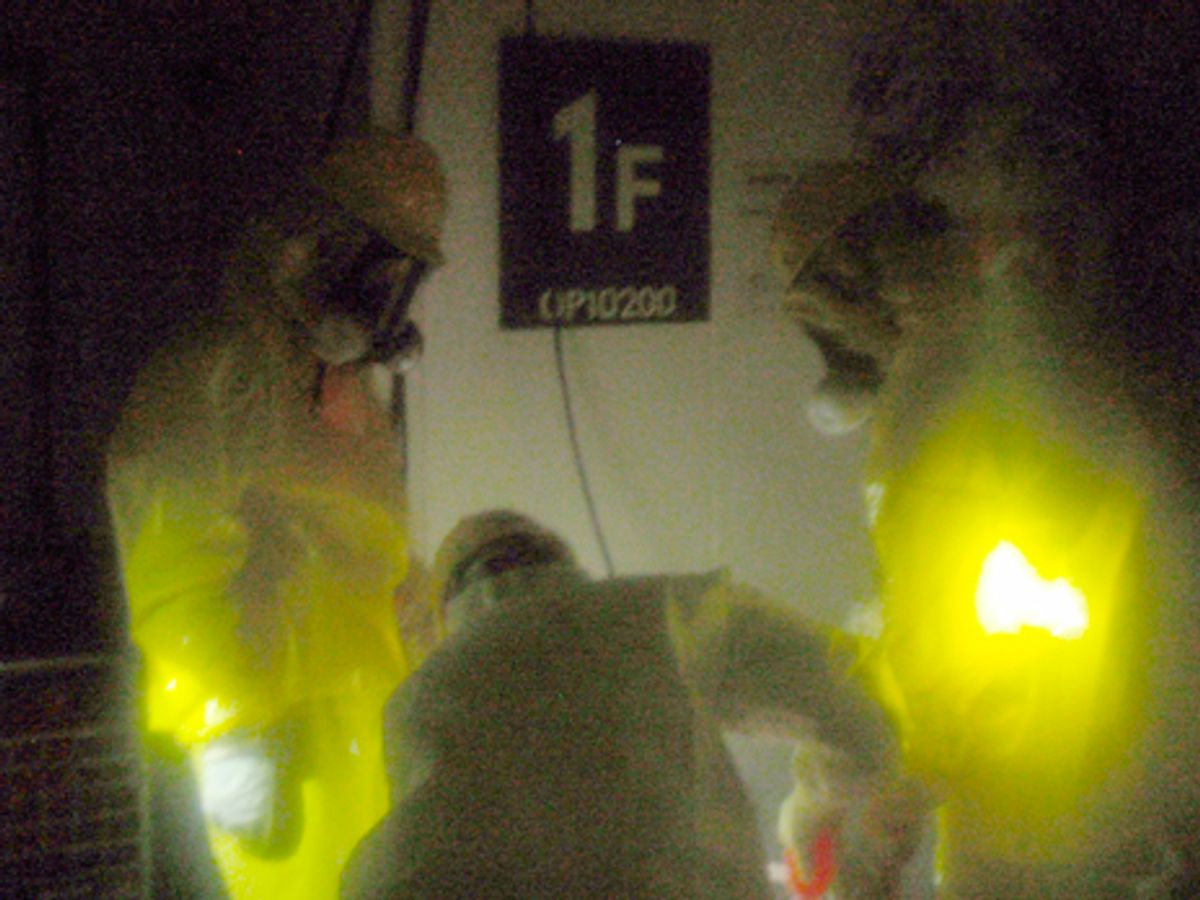Editor's Note: John Boyd is an IEEE Spectrum contributor reporting from Kawasaki, Japan. This is part of IEEE Spectrum's ongoing coverage of Japan's earthquake and nuclear emergency. For more details on how Fukushima Dai-1's nuclear reactors work and what has gone wrong so far, see our explainer and our timeline.
More concerns about radioactive contamination from the damaged nuclear plant in Fukushima emerged Monday night when Tokyo Electric Power Co. (TEPCO) said results from soil samples taken near the plant showed the presence of plutonium, though in very small amounts. Meanwhile, the power company is facing a fine balancing act of keeping the three troubled reactors from overheating by injecting water into them, while at the same time trying to prevent leaking contaminated water from flowing into the ground or the Pacific Ocean.
Late Monday night, TEPCO reported that it had taken soil samples in five areas around the plant a week ago and the results showed plutonium contamination in two of the samples taken some 500 meters from the reactor buildings. The amounts measured 0.54 becquerels per kilogram. Plutonium is a by-product of nuclear reactors employing uranium. (For reference, a banana produces 15 Bq per gram.)
Sakae Muto, vice president of TEPCO, told journalists that the amounts of plutonium detected were “extremely small,” and did not pose a problem for human health. But he added that further monitoring would be conducted.
According to the World Nuclear Association, there “are several tons of plutonium in our biosphere, a legacy of atmospheric weapons testing the 1950s and 1960s.” Chief Cabinet Secretary Yukio Edano, in a morning update for journalists, alluded to this when he said that the amount of plutonium detected was comparable to what is already present in the environment, but the “composition is different” from the plutonium in fallout from nuclear testing, suggesting that it originated at the Fukushima reactor. This finding and the earlier discovery of the pooling radioactive water in the turbine basements and trenches strengthen the belief that fuel rods have melted.
In a morning press conference, Hidehiko Nishiyama, deputy director general of Japan’s Nuclear and Industrial Safety Agency (NISA) said TEPCO was now using three pumps to move radioactive water that had pooled in the basement of No. 1 turbine building into the condenser tank located there. In a later report, NHK, Japan’s national broadcaster, said that though some water had been pumped out, TEPCO could not say how much, or when the process might be completed.
The situation at the No. 1 and No. 2 turbine buildings is more complex than at the No. 3 reactor because both their condenser tanks are full, as are storage tanks outside the buildings that are used when the condenser tanks need to be emptied. Nishiyama said that preparations where being made to pump water from the outside storage tanks to the reactor surge tanks. Surge tanks are normally used to remove water from the suppression pool, or torus, of the reactor—a doughnut-shaped chamber below the reactor where steam is vented to relieve pressure. Surge tanks are connected to the torus, but are some distance from its. . A later report said this process had begun at the No. 3 turbine building at 5:30 p.m. Once the outside tanks are emptied, then water from the condenser tanks can be transferred into them, freeing them up to take up the pooling water on the turbine floors.
Radioactive water was discovered in 16-meter-deep concrete tunnels called trenches Monday. Nishiyama said that they were being checked each day and there was no evidence that there had been overflows from them. He added that TEPCO had stacked sandbags and concrete panels around the shaft entrance of the No. 1 trench to protect the surroundings should it overflow, given that the water level was a mere 10 centimeters from the rim. He added that this safety precaution hadn’t been necessary with No. 2 and No. 3 trenches because the water levels were lower and were not rising.
In a later press conference Edano added that cooling the reactor vessels and the spent fuel storage tanks through water injection has to be given top priority to prevent them heating up. But he noted they also wanted to drain the leaked contaminated water as soon as possible. “So we need to look at both situations and maintain a balance,” he said.
By evening it appeared that little progress had been made in removing the leaked water and there was no word about where the leak or leaks might be coming from. But one piece of good news came when TEPCO said it had restored lighting to the control room of the No. 4 reactor. Now lighting has been restored to all six reactor control rooms.
PHOTO: Reuters




